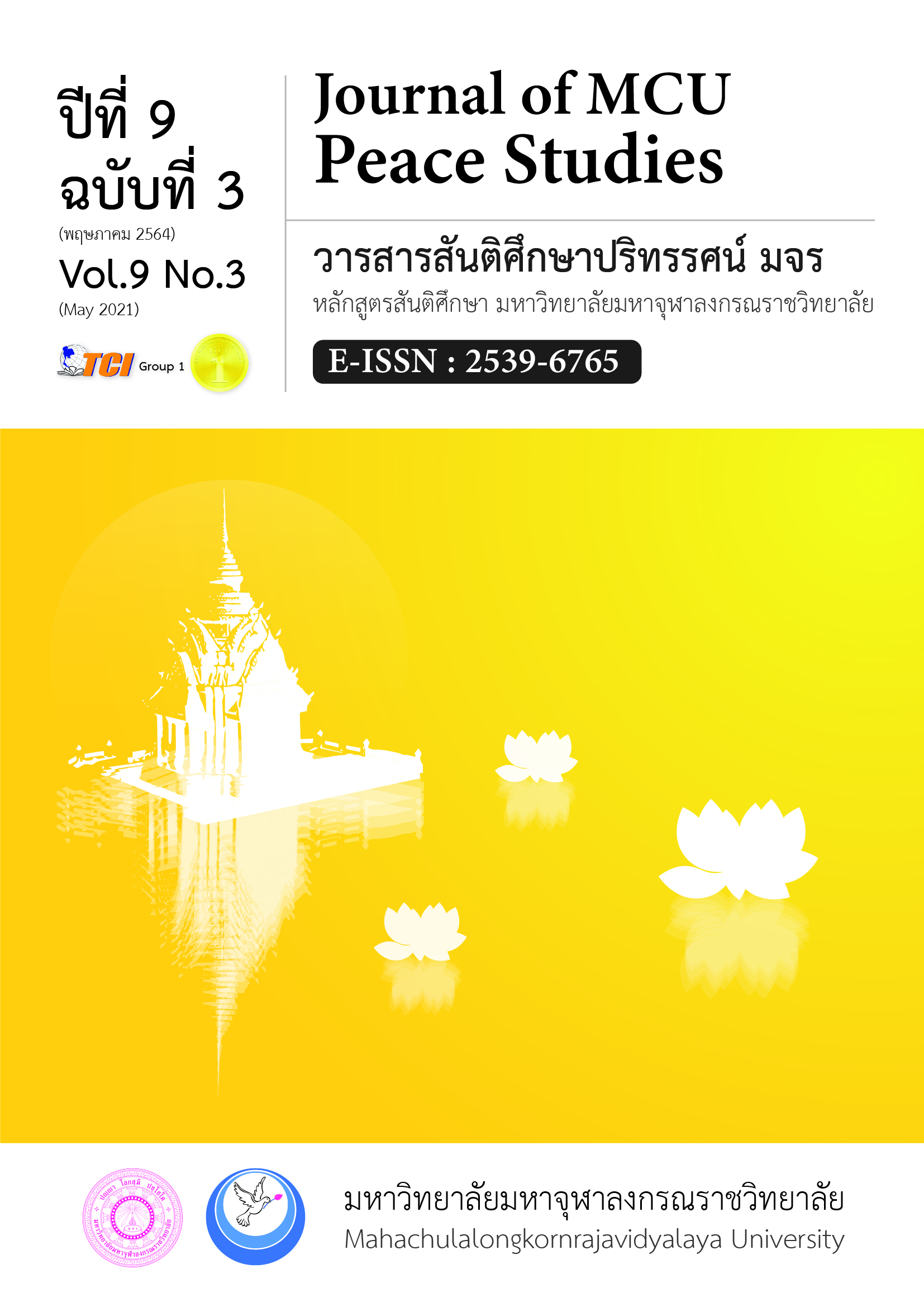แนวทางการพัฒนาระบบการตอบสนองต่อการช่วยเหลือเพื่อแก้ ปัญหาการอ่านของนักเรียนชั้นประถมศึกษาปีที่ 2
Main Article Content
บทคัดย่อ
บทความวิจัยนี้มีวัตถุประสงค์ เพื่อพัฒนาระบบการตอบสนองต่อการช่วยเหลือเพื่อแก้ปัญหาการอ่านของนักเรียนชั้นประถมศึกษาปีที่ 2 โดยการวิจัยนี้เป็นการวิจัยเชิงคุณภาพรูปแบบกรณีศึกษา กลุ่มตัวอย่างของการวิจัยนี้เป็นผู้บริหารสถานศึกษา ครูกลุ่มสาระการเรียนรู้ภาษาไทย ครูการศึกษาพิเศษ และผู้มีส่วนได้ส่วนเสียกับโรงเรียน รวม 18 คน โดยผ่านการคัดเลือกตามคุณลักษณะที่ผู้วิจัยได้กำหนดไว้ เครื่องมือที่ใช้ใน การวิจัยครั้งนี้ คือ ประเด็นคำถามเพื่อการสนทนากลุ่ม และการวิเคราะห์ข้อมูลด้วยการวิเคราะห์เนื้อหา ผลการวิจัยพบว่า แนวทางการพัฒนาระบบการตอบสนองต่อการช่วยเหลือเพื่อแก้ปัญหาการอ่าน ในโรงเรียน ควรได้รับการเตรียมพร้อม ได้แก่ 1) การคัดกรองนักเรียนที่มีปัญหาด้านการอ่าน การให้ความช่วยเหลือด้านการสอน และการวัดประเมินผลการจัดการสอนด้วยวิธีที่เหมาะสมกับนักเรียน 2) ด้านกลุ่มบริหารการงาน 4 ฝ่าย 3) คณะกรรมการระบบการตอบสนองต่อการช่วยเหลือ (RTI) ประจำโรงเรียน ได้แก่ ผู้อำนวยการโรงเรียน ครู ผู้ปกครอง และทีมสหวิชาชีพ 4) จัดสร้างรูปแบบการบริหารงานระบบการตอบสนองต่อการช่วยเหลือ (RTI) อย่างเป็นระบบ ได้แก่ การกำหนดบทบาทของผู้ที่อยู่ในระบบการตอบสนองต่อการช่วยเหลือ (RTI) สร้างจุดเด่น จุดด้อยของระบบระบบการตอบสนองต่อการช่วยเหลือ (RTI) เพื่อคอยส่งเสริมจุดเด่นให้เกิดประโยชน์มากยิ่งขึ้น คอยแก้ไขปัญหาในจุดด้อย ให้พบน้อยในสุดในระบบ และการติดตามผลของการใช้ระบบการตอบสนองต่อการช่วยเหลือ (RTI) เพื่อนำข้อเสนอแนะ ปัญหาที่ได้รับจากใช้ระบบฯ มาแก้ไข และปรับปรุงให้ระบบมีประสิทธิภาพมากยิ่งขึ้น
Article Details
ทัศนะและความคิดเห็นที่ปรากฏในบทความในวารสาร ถือเป็นความรับผิดชอบของผู้เขียนบทความนั้น และไม่ถือเป็นทัศนะและความรับผิดชอบของกองบรรณาธิการ ยินยอมว่าบทความเป็นลิขสิทธิ์ของวารสาร
เอกสารอ้างอิง
Asirapoj, S. (2015). The Development of an Administration Model on Response to Mathematic Intervention for at risk Students with the Learning Disabilities in Primary Level. (Doctoral Dissertation). Suan Dusit University. Bangkok.
Chansrisukod, C. (2017). Learning Management for Learning Disabilities. Ubon Ratchathani: Ubon Ratchathani Ratchpat University.
Fernandez, C., & Yoshida M. (2004). Lesson Study: A Japanese Approach to Improving Mathematics Teaching and Learning. Mahwah, NJ: Lawrence Erlbaum.
Intaraksa, P. (2007). The Operation of Training. (Master Thesis). Burapa University. Chonburi.
Kritsana, S., & Yoshida W. (2018). The Implementation of RTI in Developing Children with Learning Disabilities at Risk in Reading and Writing Thai Words with Short Vowels for Prathomsuksa 2 Students. Journal of Educational Measurement, 24(2), 224-236.
Kunirat, N. (2017). Process for Enhancing Reading Ability of At-Risk Student Based on Response to Intervention Concept. Journal of Graduate School Pitchayatat, 12(2), 41-49.
Lenski, S. J., & Caskey, M. M. (2009). What Research Says: Using the Lesson Study Approach to Plan for Student Learning. Middle School Journal, 40(3), 50-57.
Naksakul, K. (2009). Chudkamthai. Bangkok: The Association of Thai Language Teachers of Thaialnd.
Ponrat, P., & Sarnrattana, U. (2019). A Study of Reading and Writing Thai Language Achievement of The Second Grade Students at Ban Kudchim School Through Response to Intervention Process. Journal of Research and Development in Special Education, 8(1), 89-104.
Tantixalerm, C. (2017). Response to Intervention (RTI): Principles, Core Components, and Practical Implications for Promoting Inclusive Education Practice in Thailand. Journal of Research Methodology, 30(2), 187-227.
Tanyarattanasriskul, M. (2017). The Professional Learning Community: Practices Guidelines for Teachers. RMUTSB Academic Journal (Humanities and Social Sciences), 2(2), 214-228.
Triwaranyu C. (2015). Coaching and Mentoring of School in District 5: Rayong Province. Bangkok: Office of the Basic Education Commission.
Wattanarut, P. (2015). Response to Intervention: RtI. Journal of Education, 16(1), 1-9.


